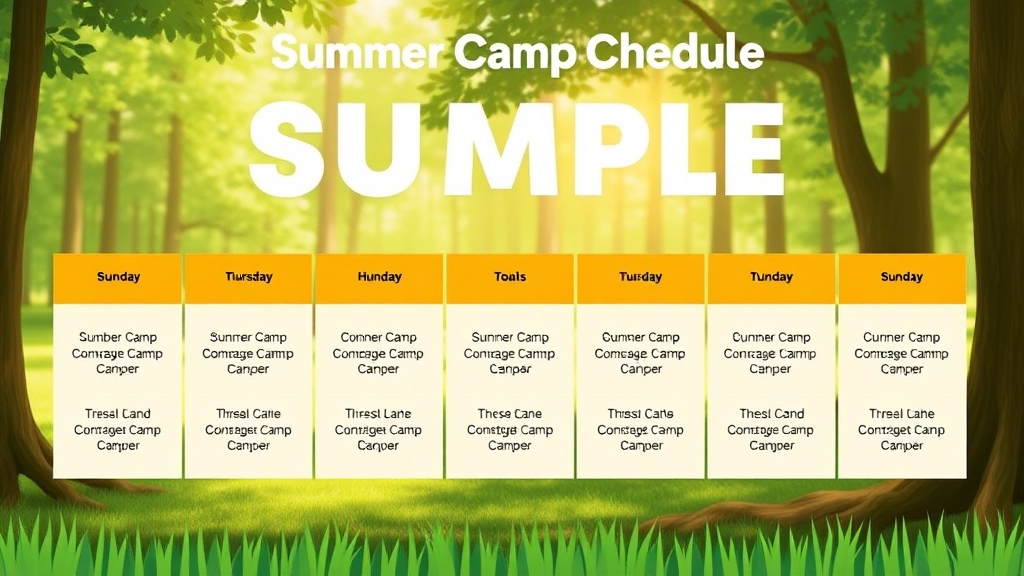Creating Memorable Summer Camp Experiences
Ever wondered what makes a summer camp truly memorable for kids? It’s all about the perfect blend of structure, fun, and adventure. In this article, we dive into a sample summer camp schedule that covers everything from morning routines to evening campfires, ensuring a balanced mix of activities that keep kids engaged and excited.
We’ll explore the typical daily structure, including morning activities, engaging midday programs, and afternoon sports and creative projects. Plus, we’ll highlight the importance of meal and rest periods, theme-based weekly activities, and adventure-filled outdoor exploration. Whether you’re a parent or a camp organizer, this guide will help you create an unforgettable camp experience tailored to different age groups and interests.
Typical Daily Summer Camp Structure
What Should a Typical Day at Summer Camp Look Like?
Ever wondered what a day at summer camp actually involves? I get it. It’s a mix of excitement and worry. You want your kids to have fun, make friends, and maybe learn a thing or two. But what does a typical day look like? Let’s break it down.
Morning Activities and Routines
Mornings at camp are all about setting the tone for the day. Think of it as the warm-up before the big game. Kids usually start with:
- Morning Assembly: A quick gathering where everyone gets the rundown of the day’s activities.
- Breakfast: A hearty meal to fuel up. Think cereal, fruit, and maybe some pancakes.
- Warm-up Exercises: Light stretches or a fun game to get everyone moving.
Engaging Midday Programs
Midday is when the real action starts. This is where camps shine, offering a variety of programs to keep kids engaged:
- Workshops: From arts and crafts to science experiments, there’s something for every interest.
- Team Games: Capture the flag, dodgeball, or even a scavenger hunt. It’s all about teamwork and fun.
- Skill Building: Activities like archery, swimming lessons, or even coding classes.
Afternoon Sports and Creative Projects
Post-lunch, it’s time to dive into sports and creative projects. This is where kids can really explore their interests:
- Sports: Football, basketball, or even yoga. The options are endless.
- Creative Projects: Painting, drama, or music sessions. It’s a chance for kids to express themselves.
Meal and Rest Periods
Let’s not forget about the essentials. Kids need time to refuel and recharge:
- Lunch: Usually a balanced meal with options to cater to different dietary needs.
- Rest Time: A short break to relax. Some camps even have quiet zones for reading or napping.
Theme-Based Weekly Activities
To keep things fresh, many camps have theme weeks. One week might be all about space, the next about dinosaurs. It keeps kids excited and looking forward to what’s next.
Adventure and Outdoor Exploration
No summer camp is complete without some outdoor adventure. This could be:
- Nature Hikes: Exploring local trails and learning about wildlife.
- Camping Skills: Basic survival skills like setting up tents or cooking over a campfire.
- Water Activities: Canoeing, kayaking, or paddleboarding.
Evening Campfire and Group Bonding
Evenings are all about winding down and bonding:
- Campfire: Think s’mores, ghost stories, and sing-alongs.
- Group Activities: Talent shows, movie nights, or even a dance party.
Tailoring Schedules for Different Age Groups
Not all kids are the same, and camps get that. Activities are often tailored to different age groups, ensuring everyone has a blast:
- Younger Kids: More supervised activities with plenty of breaks.
- Older Kids: More freedom to choose activities and explore.
Special Events and Field Trip Days
To top it all off, there are special events and field trips:
Morning Activities and Routines
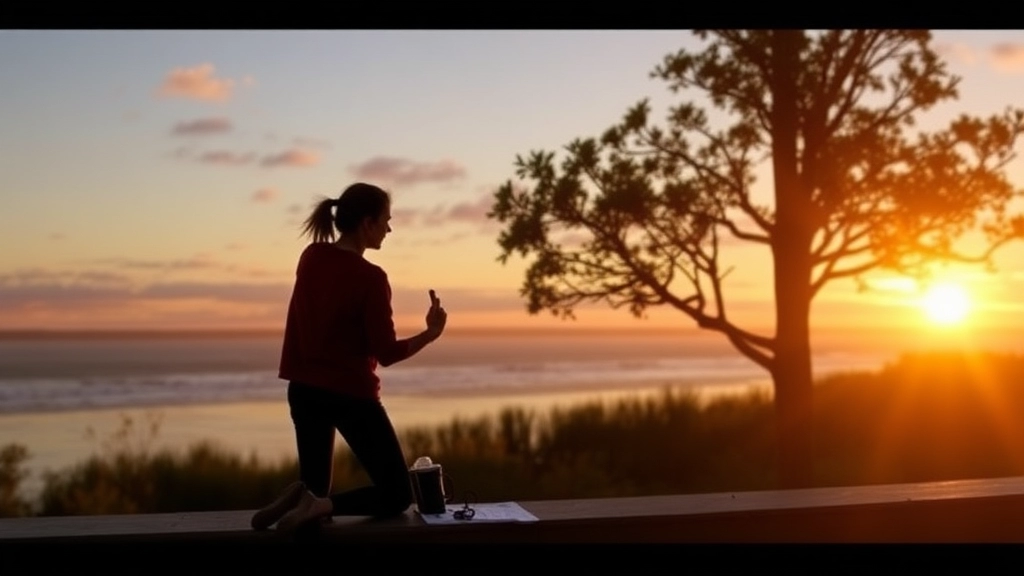
Ever wonder how to kick off a summer camp day right?
You’re not alone.
The morning sets the tone for everything else.
We’ve got a formula that works, and it’s all about structure and fun.
The Morning Kickoff
First things first, rise and shine.
Kids wake up, get dressed, and head to breakfast.
A solid meal fuels the day.
Think cereals, fruits, and maybe a cheeky pancake or two.
Morning Circle Time
After breakfast, we gather everyone for a morning circle.
This is where we set the vibe.
We talk about the day’s plan, share announcements, and maybe even throw in a quick game or song.
Keeps everyone in the loop and hyped.
Skill-Building Sessions
Next up, we dive into skill-building activities.
This could be anything from arts and crafts to coding basics.
We split the kids into smaller groups based on their interests.
Keeps things personalised and engaging.
Physical Activity
Then, it’s time to get moving.
A bit of morning exercise gets the blood pumping.
We mix it up with yoga, a mini obstacle course, or even a quick game of tag.
Keeps the energy high and the kids ready for the day.
Snack Break
By mid-morning, it’s time for a snack break.
A quick refuel with some fruit or a granola bar.
Gives everyone a moment to catch their breath before diving back in.
Transition to Midday Programs
Finally, we wrap up the morning with a smooth transition into midday activities.
Everyone knows what’s coming next, and they’re ready for it.
Keeps the flow going and the excitement levels up.
Why It Works
This routine isn’t just about keeping kids busy.
It’s about creating a balanced mix of structure and fun.
Kids thrive on routines, but they also need variety.
Our morning activities hit both marks.
So, if you’re planning a summer camp, don’t underestimate the power of a solid morning routine.
It sets the stage for a day full of adventure and learning.
Engaging Midday Programs
Ever wonder why kids often hit that midday slump? You’ve seen it: they start dragging their feet, eyes glazing over. That’s where engaging midday programs come into play. The keyword here is “engaging.” We’re talking about activities that keep the energy up and the excitement flowing.
Why Midday Programs Matter
Midday is a critical time at summer camp. It’s that sweet spot between morning vigour and afternoon activities. If we don’t keep things lively, kids can lose interest fast. Here’s what we do to keep the momentum going:
- Interactive Workshops: Think arts and crafts, music sessions, or even cooking classes. These are hands-on activities where kids can express their creativity.
- Team Challenges: Capture the flag, scavenger hunts, or problem-solving games. These not only keep them active but also foster teamwork.
- Guest Speakers and Performers: Bringing in magicians, storytellers, or even local heroes to share their experiences can be incredibly inspiring.
Keeping it Fresh and Fun
No one wants to do the same thing every day, right? That’s why variety is key. We mix things up, ensuring there’s always something new to look forward to. Here’s how we do it:
- Rotating Activities: We rotate activities daily, so no two days are the same. One day it might be a science experiment, the next, a dance-off.
- Theme Days: Incorporate themes like “Space Day” or “Under the Sea,” where all activities revolve around a central idea. This keeps things cohesive and exciting.
Real Stories, Real Impact
I remember one summer when we had a “Superhero Day.” We invited a local comic book artist to teach the kids how to draw their own superheroes. The kids were buzzing with excitement, each one eager to show off their creation. It was a hit, and the energy carried through the rest of the day.
Practical Tips for Midday Success
Want to make sure your midday programs are a hit? Here are some practical tips:
- Know Your Audience: Tailor activities to the age group and interests of the kids. What works for 6-year-olds might not fly with 12-year-olds.
- Keep it Short and Sweet: Attention spans can be short, especially around midday. Aim for activities that last 30-45 minutes.
- Get Feedback: Ask the kids what they enjoyed and what they didn’t. Use this feedback to tweak future programs.
For more ideas on how to keep your camp exciting, check out our Top 10 Exciting Summer Camp Activities and learn about Summer Camp Craft Ideas for All Ages.
Afternoon Sports and Creative Projects
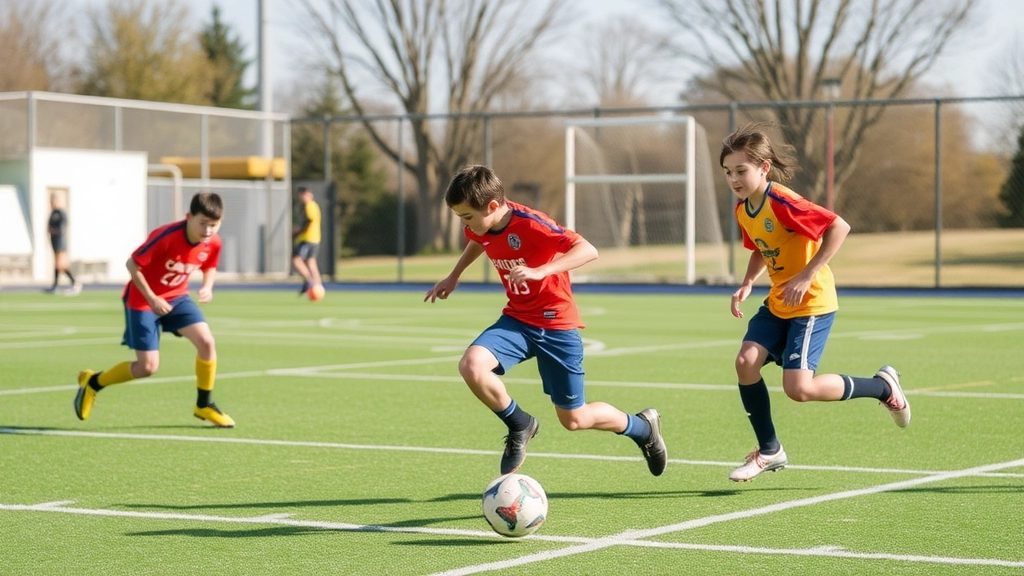
Ever wonder how to keep kids pumped and engaged after lunch at summer camp?
We’ve got it covered.
Afternoon sports and creative projects are the secret sauce to make the day fly by.
Keep the Energy Up with Sports
Kids have boundless energy, right?
So, let’s channel it.
Sports Activities:
- Football: Always a hit. Gets everyone running and laughing.
- Basketball: Perfect for teamwork and quick thinking.
- Swimming: Cool off while having a blast. Safety first, always.
- Tennis: Great for focus and agility.
These activities aren’t just fun. They build skills.
Teamwork, coordination, and a healthy dose of competition.
Unleash Creativity with Projects
Not every kid is a sports fanatic.
That’s where creative projects come in.
Art and Craft:
- Painting: Let them express themselves with colours.
- Clay Modelling: Perfect for tactile learners.
- Tie-Dye: A camp classic. Fun and fashionable.
- Jewellery Making: Fine motor skills and creativity rolled into one.
Music and Drama:
- Instrument Workshops: Try out guitars, drums, or even a ukulele.
- Drama Sessions: Bring out the inner actor. Skits, plays, and improv.
- Dance Classes: From hip-hop to ballet, let them groove.
Why It Works
Mixing sports with creativity keeps the brain and body active.
Kids don’t get bored. They get better.
Benefits:
- Physical Health: Keeps them fit and strong.
- Mental Well-being: Creativity is a stress buster.
- Social Skills: Working in teams, sharing ideas, and making friends.
Real Stories, Real Impact
Take Sam, for instance.
He wasn’t into sports. But give him a paintbrush, and he was in his element.
By the end of camp, he was leading art projects and teaching others.
Or Mia.
Shy at first, but drama classes brought her out of her shell.
She’s now the star of her school play.
Tailoring Activities
We’re not a one-size-fits-all operation.
We tailor activities based on age and interest.
For Younger Kids:
- More guided activities.
- Simple crafts and basic sports.
For Older Kids:
- More independence.
- Advanced sports and complex projects.
Meal and Rest Periods
Ever wondered how to keep kids energised and happy at summer camp? It all boils down to meal and rest periods. This part of the day is crucial for recharging those little batteries, so let’s dive in.
Why Are Meal and Rest Periods Important?
First off, let’s get real. Kids are like little dynamos, and they need fuel. Proper meals and rest aren’t just nice-to-haves; they’re essential. Without them, kids can get cranky, tired, and less likely to enjoy the rest of the day’s activities.
Meal Time: More Than Just Food
Meal times at camp are about more than just eating. They’re a chance for kids to socialise, share stories, and build friendships. Here’s how we make meal times a hit:
- Balanced Meals: We serve a mix of proteins, carbs, and veggies. Think grilled chicken, pasta, and a side of broccoli.
- Hydration Stations: Kids have constant access to water and healthy drinks. Hydration is key, especially in the summer heat.
- Fun Themes: Sometimes, we throw in a themed mealâlike a pirate lunch or a picnic day. It keeps things exciting and fresh.
Rest Periods: The Secret Sauce
Now, onto the rest periods. You might think, “Do kids really need a break?” Absolutely. Here’s why:
- Recharging: A short nap or quiet time can do wonders. It helps kids recharge and get ready for the next round of activities.
- Quiet Time: Even if they don’t nap, a bit of downtime helps them relax. We set up cosy corners with books and soft music.
- Mindfulness Activities: Sometimes, we include light yoga or breathing exercises. It’s not just for adults; kids benefit too!
Real-Life Example: The Power of a Good Break
I remember one summer when we had a particularly energetic group. By midday, they were all over the placeâexcited but exhausted. We introduced a 30-minute rest period after lunch. The difference was night and day. Post-rest, they were more focused, happier, and genuinely enjoyed the afternoon activities more.
Making It Work for Different Age Groups
Tailoring meal and rest periods to different age groups is key. Younger kids might need a full nap, while older ones just need some chill time. Here’s a quick breakdown:
- Ages 5-7: Full nap or quiet time with storybooks.
- Ages 8-10: Quiet activities like drawing or reading.
- Ages 11-13: Free time to chat, play board games, or listen to music.
For more tips on structuring your camp day, check out our sections on Fun and Learning Combined and Endless Fun Activities. Trust me, nailing these periods can make all the difference.
Theme-Based Weekly Activities
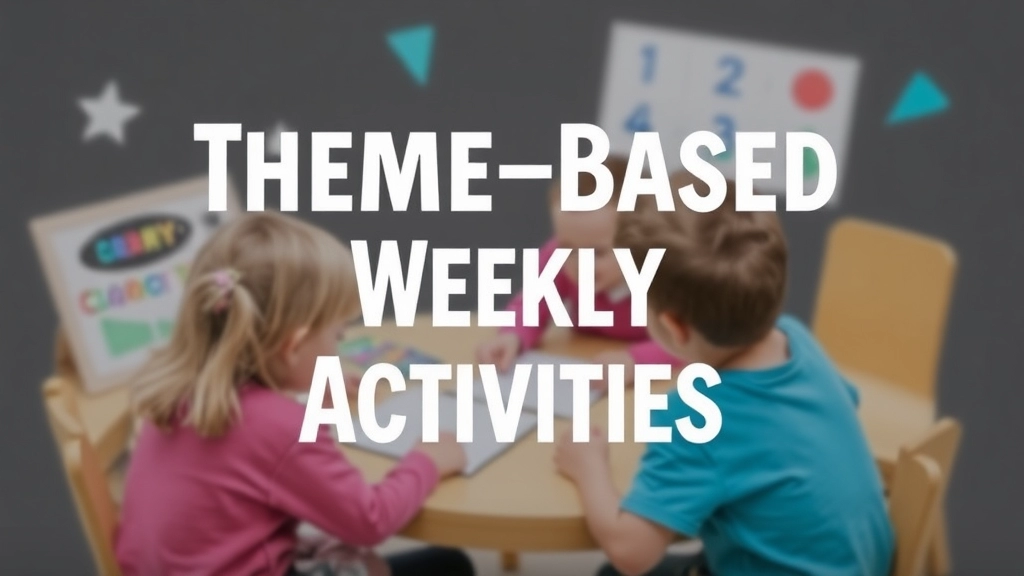
Ever wondered how to keep kids excited and engaged every single week at camp?
We’ve got it sorted with our theme-based weekly activities.
Each week, we dive into a new theme, transforming the camp into a whole new world.
Kids love it.
It keeps things fresh and interesting, so they’re always looking forward to what’s next.
Why Themes Work
Themes give structure and variety.
They make each week unique.
We’ve seen kids light up with excitement when they know it’s “Pirate Week” or “Space Adventure Week.”
Themes are like magic—they turn ordinary days into unforgettable experiences.
Examples of Popular Themes
Here’s a sneak peek at some of our favourites:
- Pirate Week: Treasure hunts, pirate costumes, and sea shanties.
- Space Adventure Week: Rocket building, space-themed crafts, and stargazing.
- Wild West Week: Cowboy games, line dancing, and gold panning.
- Nature Explorer Week: Hiking, bug hunts, and plant identification.
- Sports Mania Week: Different sports each day, from football to archery.
How We Implement Themes
We don’t just slap a label on the week and call it a day.
Each theme is woven into every activity.
From morning routines to evening campfires, everything ties back to the theme.
Here’s how we do it:
- Decorations: The camp is decked out to match the theme.
- Costumes: Staff and kids dress up to bring the theme to life.
- Activities: All games, crafts, and projects are theme-related.
- Stories and Songs: We share tales and tunes that fit the theme.
Real Stories, Real Fun
Last summer, during Pirate Week, we had a massive treasure hunt.
Kids formed pirate crews, created maps, and searched high and low for hidden treasure.
The excitement was off the charts.
By the end of the week, they were all expert treasure hunters.
They still talk about it.
Benefits of Theme-Based Activities
Themes do more than just entertain.
They:
- Encourage Creativity: Kids use their imagination in new ways.
- Build Teamwork: Working together on themed projects fosters cooperation.
- Enhance Learning: Themes often include educational elements.
- Boost Engagement: Kids stay interested and involved.
Adventure and Outdoor Exploration
Alright, let’s get real. When you think of summer camp, what’s the first thing that pops into your head? For most of us, it’s the thrill of adventure and outdoor exploration. But how do you make sure it’s not just a walk in the park (pun intended)? How do you ensure it’s engaging and safe for everyone involved?
Why Adventure and Outdoor Exploration Matter
First off, let’s tackle the big questions. Why should we even bother with outdoor activities? Why not just stick to indoor games and crafts?
- Nature’s Playground: Kids need to break away from screens and experience the world outside. It’s a whole different ball game when they’re climbing trees or navigating trails.
- Building Resilience: Getting out of their comfort zones helps kids build resilience. They learn to face challenges head-on.
- Teamwork and Leadership: Outdoor activities often require teamwork. It’s a golden opportunity for kids to develop leadership skills and learn the importance of working together.
Types of Outdoor Activities
Now, what kind of adventures are we talking about? Here’s a list to get your gears turning:
- Hiking and Nature Walks: Perfect for all age groups. Tailor the difficulty level based on the age and fitness of the campers.
- Orienteering: Think of it as a treasure hunt with maps and compasses. It’s fun and educational.
- Water Sports: Canoeing, kayaking, or even just a good old-fashioned swim. Water activities are always a hit.
- Rock Climbing: For the more adventurous souls. Ensure you have trained professionals and the right equipment.
- Camping: An overnight camping trip can be the highlight of the camp. Teach them how to set up tents, build a fire, and cook outdoors.
Safety First
You can’t talk about outdoor exploration without addressing safety. Here’s how to keep things safe and sound:
- Proper Gear: Make sure everyone has the right gear â from hiking boots to life jackets.
- Trained Staff: Have trained professionals for activities like rock climbing and water sports.
- First Aid: Always have a first aid kit on hand and staff trained in basic first aid.
- Buddy System: Implement a buddy system to ensure no one is left behind or gets lost.
Real Stories, Real Impact
Let me share a quick story. Last summer, we had a group of kids who were initially terrified of the idea of hiking. By the end of the camp, they were leading the pack, navigating trails like pros. One of them even said, “I never knew I could do this!” That’s the kind of impact we’re aiming for.
Linking It All Together
Adventure and outdoor exploration aren’t just about the thrill. They’re about building character, fostering teamwork, and creating memories that last a lifetime. When planned well, these activities can be the cornerstone of a truly unforgettable summer camp experience.
So, next time you’re planning your camp schedule, make sure to include a healthy dose of adventure and outdoor exploration. Trust me, it’s worth it. For more ideas on planning your activities, check out our top summer camp field trip ideas for 2024. And if you’re looking for tips on ensuring safety, don’t miss our essential safety tips on preventing summer camp drownings.
Evening Campfire and Group Bonding
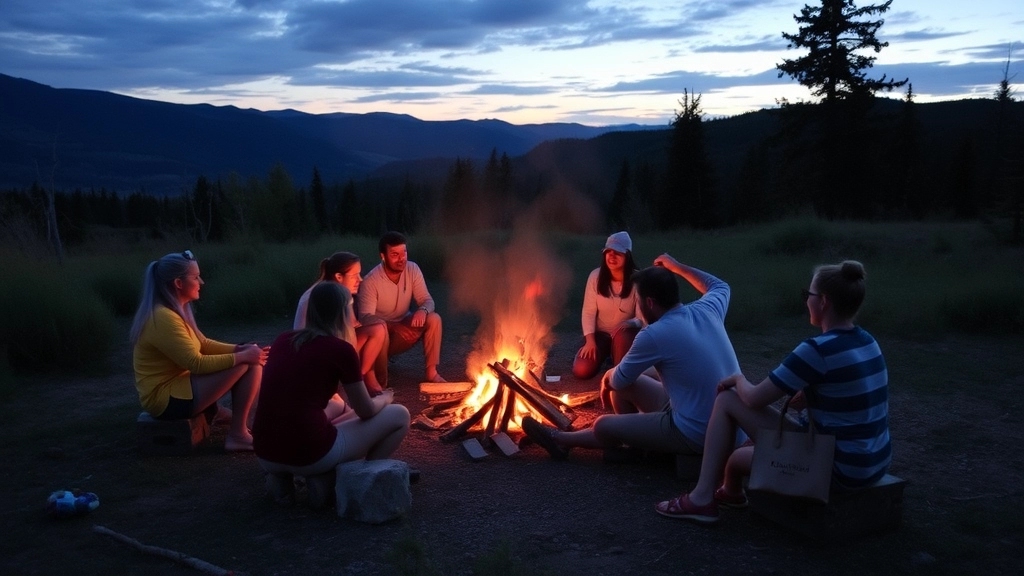
Ever wonder what makes summer camp unforgettable?
It’s the evening campfire and group bonding.
This is where the magic happens.
Why Evening Campfires Matter
Evening campfires are the heart of summer camp.
They’re not just about roasting marshmallows.
It’s about connection.
Why do we need this?
- Relaxation: After a day packed with activities, everyone needs to unwind.
- Storytelling: Sharing tales and experiences builds a sense of community.
- Reflection: It’s a time to reflect on the day and appreciate the little moments.
What Happens Around the Campfire?
So, what do we actually do?
- Songs and Music: Classic campfire songs are a must. Everyone joins in, no matter how off-key.
- Stories: From ghost stories to personal anecdotes, storytelling is a big hit.
- Games: Simple games like ‘Two Truths and a Lie’ or ‘Charades’ keep everyone engaged.
- Discussions: Open-ended questions spark meaningful conversations.
Real Stories, Real Connections
I remember one campfire where a shy camper finally opened up.
He shared a story about his pet dog.
Everyone listened.
By the end of the night, he had made new friends.
That’s the power of a campfire.
Benefits for Different Age Groups
Kids: They love the excitement and the chance to be a little scared by ghost stories.
Teens: They appreciate the deeper conversations and the chance to bond over shared experiences.
Counsellors: It’s a chance for us to connect with the campers on a personal level.
Making It Memorable
Want to make your campfire sessions unforgettable?
- Themes: Have themed nights like ‘Pirate Night’ or ‘Space Adventure’.
- Props: Use props like lanterns, costumes, or even a simple guitar.
- Involvement: Get everyone involved. The more, the merrier.
Final Thoughts
Evening campfires are the glue that holds a summer camp together.
They create memories that last a lifetime.
So, if you’re planning a summer camp, don’t skip the campfire.
It’s where the real magic happens.
Tailoring Schedules for Different Age Groups
Ever wondered how to keep kids of different ages engaged at summer camp? It’s a common concern for parents and camp organisers alike. Trust me, I’ve been there. The trick is to tailor the schedule to fit the unique needs and interests of each age group. Let’s break it down.
Why Tailoring Schedules Matter
Kids aren’t one-size-fits-all, right? Younger kids have different energy levels, attention spans, and interests compared to older kids. If you try to run a one-size-fits-all schedule, you’ll end up with bored teens and exhausted toddlers. Not ideal.
How We Do It
Here’s how we make sure every age group has a blast:
- Morning Routines:
- Younger Kids: Start with light activities like storytime or simple crafts. They need a gentle start to the day.
- Older Kids: Kick off with something a bit more stimulating like a scavenger hunt or team-building exercises. They’re ready to hit the ground running.
- Midday Programs:
- Younger Kids: Activities that involve lots of movement but are easy to follow, like musical chairs or a mini obstacle course.
- Older Kids: More complex challenges such as coding workshops or advanced sports drills. They love a good challenge.
- Afternoon Fun:
- Younger Kids: Creative projects like painting or simple science experiments. Keeps their little hands and minds busy.
- Older Kids: Sports competitions or drama classes. They appreciate activities that allow them to showcase their skills.
- Meal and Rest Periods:
- Younger Kids: Need more frequent breaks and maybe even a nap time.
- Older Kids: Fewer breaks, but longer meal times where they can socialise and relax.
- Theme-Based Weekly Activities:
- Younger Kids: Simple, engaging themes like “Under the Sea” or “Dinosaur Week.”
- Older Kids: More intricate themes like “Survival Skills” or “Space Exploration.”
- Adventure and Outdoor Exploration:
- Younger Kids: Short, guided nature walks or treasure hunts.
- Older Kids: Longer hikes, kayaking, or rock climbing. They’re up for more adventurous stuff.
- Evening Campfire and Group Bonding:
- Younger Kids: Fun, easy-to-understand stories and sing-alongs.
- Older Kids: Deeper conversations, ghost stories, or talent shows. They enjoy activities that allow them to express themselves.
Real-Life Example
Last summer, we had a group of 6-year-olds and another of 14-year-olds. The younger kids loved their morning puppet shows and afternoon finger painting sessions. Meanwhile, the teenagers couldn’t get enough of their basketball tournaments and coding workshops. Both groups were engaged and happy because their schedules were tailored to their needs.
Special Events and Field Trip Days
Ever wonder what makes summer camp truly unforgettable?
It’s the special events and field trip days.
These are the days kids talk about for months.
They break the routine and add that extra spice to the camp experience.
Why Special Events Matter
Kids love surprises.
They crave new experiences.
Special events break the monotony and keep the excitement alive.
- Talent Shows: Everyone gets a moment in the spotlight.
- Carnival Days: Think games, face painting, and cotton candy.
- Themed Parties: From pirate adventures to superhero nights.
Field Trip Days: A Breath of Fresh Air
Field trips are the crown jewel of any summer camp.
They offer a change of scenery and a chance to explore.
- Nature Hikes: Kids connect with nature and learn about local wildlife.
- Museums: A dose of culture and history.
- Water Parks: Fun and a great way to cool off.
Planning for Success
But how do we make sure these days go off without a hitch?
- Safety First: Always the top priority.
- Engaging Activities: Keep kids entertained and learning.
- Smooth Logistics: Transport, permissions, and schedules.
Real Stories, Real Fun
I remember one field trip to a science museum.
Kids were mesmerised by the planetarium.
They talked about the stars and planets for weeks.
Or the time we had a medieval fair.
Knights, jousting, and everyone in costume.
The kids felt like they were in a different era.
Tailoring to Different Age Groups
Not all events are one-size-fits-all.
- Younger Kids: Simple, engaging activities like petting zoos.
- Older Kids: More adventurous outings like rock climbing.
Making Memories
At the end of the day, it’s about creating lasting memories.
Special events and field trips are the highlights.
They make camp more than just a daily routine.
They turn it into an adventure.
And that’s what keeps kids coming back year after year.
For more tips on organizing memorable events, check out our Ultimate Summer Camp Calendar Guide. If you’re interested in unique ideas, don’t miss our Creative Summer Camp Award Ideas.
FAQs about Sample Summer Camp Schedule
What is the purpose of the morning routine at summer camp?
The morning routine sets the tone for the rest of the day. It balances structure and fun, helping kids thrive on routines while also providing variety to keep them engaged.
What activities are included in the morning schedule?
The morning schedule includes activities such as breakfast, morning circle time, skill-building sessions, physical activities, a snack break, and a transition to midday programs.
How do afternoon sports and creative projects benefit the campers?
Afternoon sports and creative projects keep kids physically and mentally active. They help in developing physical health, mental well-being, and social skills by promoting teamwork, coordination, and creativity.
What types of sports are offered in the afternoon?
Sports activities include football, basketball, swimming, and tennis. These activities are designed to be fun while building essential skills like teamwork and coordination.
What creative projects are available for campers who aren’t into sports?
Creative projects include painting, clay modeling, tie-dye, jewelry making, instrument workshops, drama sessions, and dance classes. These activities cater to various interests and skill levels.
Why are theme-based weekly activities important?
Theme-based weekly activities keep the camp experience fresh and exciting. They provide structure and variety, making each week unique and engaging for the kids.
What are some examples of popular themes?
Popular themes include Pirate Week, Space Adventure Week, Wild West Week, Nature Explorer Week, and Sports Mania Week. Each theme is integrated into all camp activities, making the experience immersive and fun.
What happens during the evening campfire sessions?
Evening campfire sessions include singing songs, sharing stories, playing games, and having discussions. These activities help in relaxation, building a sense of community, and reflecting on the day’s experiences.
Why are evening campfires significant for campers?
Evening campfires are crucial for relaxation, storytelling, and reflection. They help in building connections among campers, fostering a sense of community, and creating lasting memories.
How are activities tailored for different age groups?
Activities are tailored based on age and interest. Younger kids have more guided activities and simpler crafts, while older kids enjoy more independence, advanced sports, and complex projects.
What are the benefits of participating in theme-based activities?
Theme-based activities encourage creativity, build teamwork, enhance learning, and boost engagement. They make the camp experience more enjoyable and educational.
How can evening campfires be made memorable?
Evening campfires can be made memorable by incorporating themes, using props like lanterns and costumes, and ensuring everyone is involved. These elements add to the fun and create lasting memories.
References
-
Summer Camp Schedule Ideas
-
The Importance of Morning Assembly at Camp
-
The Ultimate Guide to Summer Camps

